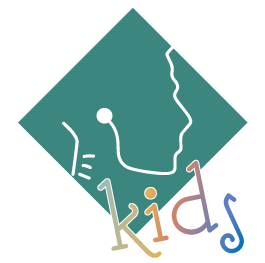 Tongue and Lip-Tied
Tongue and Lip-Tied
Is your child tongue-tied?
“Tongue-tied” is the common name for ankyloglossia — when the lingual frenum (the thin piece of skin under your tongue that connects it to the bottom of your mouth) is too short or too far forward. Patients can also have a “lip tie” that can create similar issues. In some cases, it is completely harmless. However, in some children it can cause problems with growth of the face, speech development, eating, swallowing and even breathing.
To prevent these problems, your pediatrician or dentist may recommend a frenectomy or a functional frenuloplasty, myofunctional therapy, or another tongue-tie treatment.

Why should my child get a tongue-tie release?
The lingual frenum is an important piece of skin because it anchors your tongue to the bottom of your mouth. It varies in length from person to person, and when it is too short or too far forward, it can inhibit the tongue’s movement too much, which can in turn lead to oral health issues or disrupt sleep. Being tongue-tied can be troublesome in the early stages of development for infants and children.
- Some infants who are tongue-tied have trouble breastfeeding or drinking from a bottle
- Tongue-tied toddlers and children can have trouble eating and swallowing
- Some children who are tongue-tied have trouble making certain sounds when learning to speak
Naturally, when a child has problems eating and swallowing, it can affect their ability to get proper nutrition. A frenectomy would therefore be an essential procedure for their overall health and well-being.
What is a frenectomy?
A frenectomy is a simple procedure that is a form of tongue-tie release. The doctor numbs the area and cuts the frenum just enough to allow the tongue to move more freely and naturally. The procedure is done using a local anesthetic and normally takes less than 15 minutes from start to finish. Your child will experience very little discomfort during the procedure.
What is a functional frenuloplasty?
A functional frenuloplasty is another form of tongue-tie release. It’s different from a frenectomy because it also alters the muscle by selectively loosening up tight areas. This is done by allowing the functionality of the tongue during the procedure to dictate what needs to be released. Similar to a frenectomy, the procedure does not take longer than 15 minutes to perform and has a very high success rate.
Some patients can get these releases completed both surgically and non-surgically using the latest laser technology.
The Results
Recovery is typically very straightforward. We recommend that you make sure the area under the tongue stays clean and that your child eats softer foods until it is completely healed, which typically takes a week.
After a frenectomy, activities such as breastfeeding, bottle feeding, eating, and swallowing should become easier. Speech development issues should begin to improve, as well. Your child’s tongue will be able to move freely and naturally, without restriction or pain.
Symptoms Include
INFANTS
- FEEDING ISSUES
- Difficulty swallowing
- Infant falls asleep while attempting to nurse
- Trouble latching
- Milk or formula leaks/spills out of mouth while feeding
- Upper lip curts inward when latched
- Gumming or chewing on nipple while nursing
- Noticeable clicking noise while feeding
- Dissatisfied after nursing/feeding
- FUNCTIONAL ISSUES
- Acid reflux (gastroesophageal reflux)
- Mouth open at rest
- Extreme gas
- Slow or poor weight gain
- Noticeable pain or tightness
- Colic symptoms
ADULTS
-
- Facial tension
- Neck tension
- Forward head posture
- Sore when eating
- Tightness under chin
- Base of skull pain
- Difficulty speaking
- Mouth breathing
- Sleep issues
Take Our Questionnaire
 Symptom Checker
Symptom Checker
Could you benefit from myofunctional therapy?
Do you or your child snore at night or have trouble sleeping? Do you experience chronic congestion, mouth breathing or persistent oral health issues?
If so, you might benefit from myofunctional therapy.
What is myofunctional therapy?
Myofunctional therapy focuses on the facial muscles and soft tissues of the face and neck, including the tongue. The goal is to train these muscles to behave as they were intended for optimal orofacial posture.
When children develop improper orofacial posture, it can affect their health in various ways as they grow, including:
-
- Inadequate facial skeletal development
-
- Difficulties chewing and swallowing
-
- Speech impediment
-
- Misaligned jaw and teeth
-
- Mouth breathing
-
- TMD
-
- Persistent oral health issues
Dr. Klauer often encourages patients to read this article to learn more about myofunctional therapy.
The Results
Through myofunctional therapy, you’ll notice improvements in your teeth and jaw alignment, breathing, speech, chewing, and swallowing. Additionally, you’ll experience better sleep, as well as better overall function of the mouth and nose.
What other lip and tongue-tie treatments do we offer?
- All additional treatments can be offered individually or in tandem with surgical or laser procedures to bolster your healing journey in a holistic manner. Treatments include:
- Myofunctional therapy techniques – Buteyko breathing
- Habit elimination – nail biting, lip licking, and thumb sucking
- Posture training – exercises to support proper tongue resting posture
Symptoms Include
Explore More Symptoms + Conditions

Mouth Breathing
Mouth breathing is not a bad habit but a compensation for survival. As humans, we are supposed to breathe through our noses so we can warm, moisten, and filter the air before it gets to our lungs. It is the […]
Learn More
Pediatrics + Sleep
Pediatric neurological disorders and chronic diseases are on the rise. Sadly, over 50% of children have a “chronic disease” compared to less than 10% only two generations before. Proper sleep is paramount for health. If your child is exhibiting any […]
Learn More
Facial Pain + Headaches
TMD, headaches, and facial pain are life-altering conditions that can severely impact your quality of life. Over 10 million people in the US suffer from TMJ-related issues. We are learning that most of these problems result from macro-trauma or micro-trauma. […]
Learn More
Snoring + Sleep Apnea
The two most common sleep disorders are insomnia and obstructive sleep apnea (OSA). Insomnia is the inability to fall asleep or the drive to stay awake. OSA is a cessation or slowed breathing at night that causes repeated awakening unknown […]
Learn More